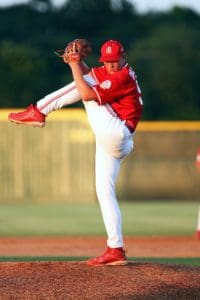There is a great relationship between baseball and science. That can be compared with the sailors and the sea they are sailing. You will not need to know what happens up in the clouds or under the waves for the effective navigation of the vessel.
In baseball, you also don’t have to understand the physics to excel. Yet, it doesn’t matter with the gameplay, but there are physical reasons behind success and failure. That is why baseball pros have put more effort into mapping everything from throwing a rising ball or catching a home run.
If you compare baseball with other sports, then professional baseball is dragging its feet as it applies science with training methods. With that, swing and battling mechanics are, therefore, finding their way into this game.
Details
In baseball, there are some aspects of the science behind this game. However, both batters and hitters will use physics with their bat knowingly or unknowingly. For the major league pitchers, it is hard to hit, and therefore, science will unknowingly be used to make the hitting easier.
If you consider the Major League Baseball, you will realize that the pitcher’s mound should be 60 feet, 6-inch far from the home plate. The ball will take approximately 0.4 seconds for it to travel the distance. That is essential because it will emphasize how fast the reaction time will be needed for the pitcher to hit a home run.
When the baseball leaves the pitcher’s hand, the hitter will need approximately 0.1 seconds to locate that ball. During this lapsed time, the ball will have traveled about 12 feet. The batter, on the other hand, will take approximately seven-hundredths of seconds for them to calculate the speed, spin, and trajectory. During this time, the ball will have covered another 10 feet. The batter will then need 0.017 seconds for his brain and body so that it can work together before he can execute a swing. It, therefore, means the batter will have about 0.09 seconds for him to make a decision of either to swing or not. In case the hitter hesitates even at a blink of an eye, that will lead to a strike or a foul ball.
There are laws of motion that also applies with hitting a ball. According to Newton’s Second Law, the object acceleration produced by a net force will be directly proportional to the net force magnitude. That will be in the same direction similar to the net force and also inversely proportional to object mass. That means that the acceleration of the object will be depending on the mass (m) and net force (F) of the object. (Mathematically, physicists will write this as F=ma).
The other aspect of science in baseball is with the optimal angle that the ball will hit. Brian Schutzenhofer, claims that the best angle that you can hit the ball is when your bat is at an angle of 45 degrees. At this angle, the ball will be able to travel furthest and that will result in a homerun.
At the game, a pitcher will need to use his body movement for him to execute a pitch. The human perception museum located in San Francisco and Exploratorium.edu website says that pitchers will use sequential summation of movement. That is usually the momentum of the body to the ball. As the action takes place, the largest body mass will move first and continue with the decreasing body mass. For that to happen, the pitcher will have to drive his legs, shoulders, hips, wrists, arms, and fingers.
The whip-like action will give the pitcher an ability to get the most momentum and accuracy of the ball. The pitcher will, therefore, transfer the body momentum into the ball. That is why they have to use the windup something that is popular with most people. If they take a forward step, it will make ball throwing to be much easier.
That is why the pitcher will have to start behind the pitching rubber. He will end up thrusting the entire body toward the ball. According to Exploratorium.edu on average, the major league pitcher has the capacity to throw the ball at a speed of 95 miles per hour.
The Final Words
When playing the baseball, mechanically, the player has to increase his decision time. That helps him to arrive on time with the point of contact when the ball is at peak velocity. This vital information won’t do good when it’s kicking at the head of the player before the pitch. With the science knowledge of baseball, it helps to encourage swing techniques which stresses the bat quickness.
If you also train the muscle to contract forcibly and fast, according to analysts, they claim that physical exercises will help to couple quickness with an improved bar velocity.

